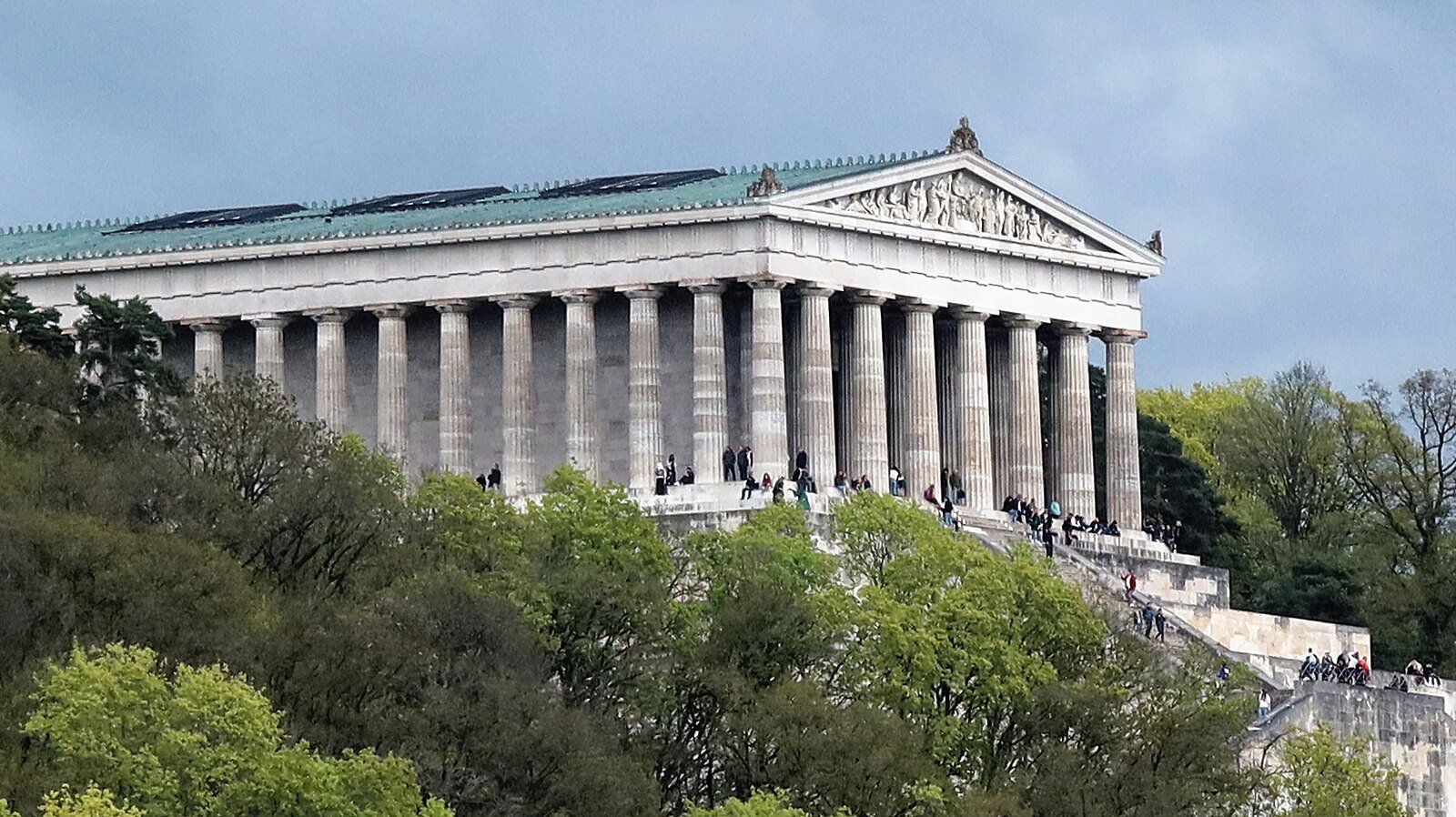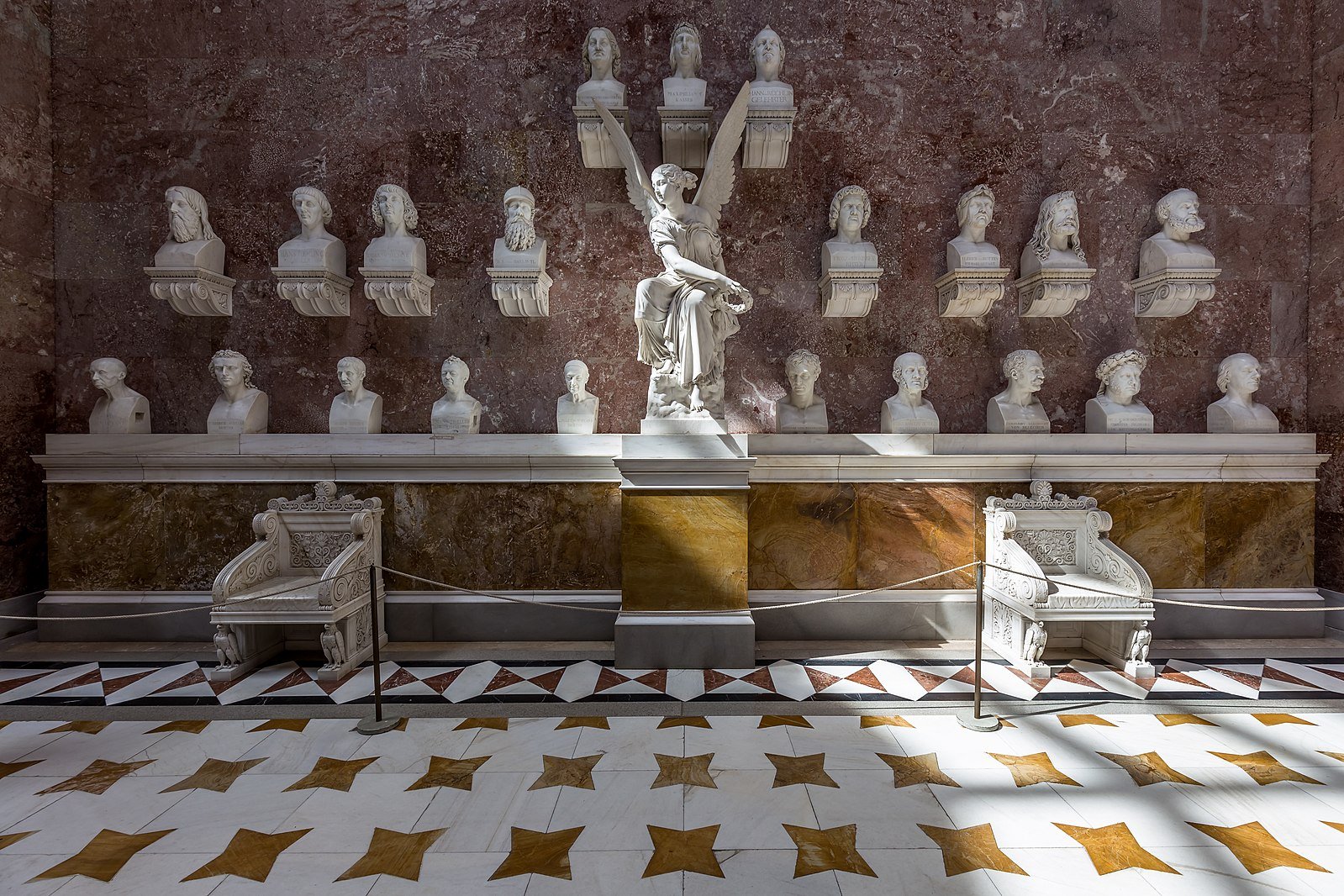
The iconic Parthenon in Athens has inspired many buildings around the world, including Walhalla, Germany’s hall of fame.
Preserving historical memory and cultural heritage, this building is one of the most important and majestic monuments of Germany, dating back to the 19th century. The hall is located in Bavaria, near the city of Regensburg. A mecca for visitors interested in German heritage, Walhalla stands proudly above the picturesque banks of the mighty Danube.
Greek Motifs and Northern Myths in the History of Walhalla
Walhalla is often called the German Parthenon and for good reason. The monument was built in the neo-classical style in the form of a temple surrounded by a portico with majestic columns.
The name Walhalla also carries its own meaning, weaving motifs from Scandinavian mythology into the Greek appearance. According to northern myths, Walhalla was a paradise where brave warriors and heroes went after death. There, they enjoyed eternal life and continued to perform exploits in the company of the supreme god Odin.
This concept of the fusion of two cultures became the inspiration for the German Parthenon. The building was created by order of King Ludwig I, who reigned from 1825 to 1848. According to historians, he wanted to create a place of memory, perpetuating prominent Germans as a reference point and inspiration for future generations.

Walhalla’s Appearance
The architect Leo von Klenze, an outstanding master of the neo-classical style of his era, took on such a responsible task. The main source of inspiration for the future hall of fame was the famous Acropolis’ Parthenon of Athens dated to the 5th century BC. Construction began in 1830 and lasted twelve years. The monument was open to the public on October 18, 1842.
As a result, the architect created a grandiose structure. At 410 feet long and 180 feet high, the German monument resembles the Parthenon with its Doric order columns along the main and side facades. Inside and outside, Walhalla is lined with precious marble, and the hall itself rises above a massive multi-tiered foundation.
To adorn the building, King Ludwik and his advisors selected eminent figures, including generals, scientists, politicians, writers, and composers. Their busts and memorial plaques grace the walls of this structure.
Walhalla – containing busts of the most important German speakers in history – from kings like Friedrich The Great, to poets like Friedrich von Schiller and politicians like Otto von Bismarck. Without a doubt the highest achievement to get here in Germany pic.twitter.com/HL3TXwzcFd
— Enis Guri Gashi (@EnisGuriGashi) November 8, 2021
Above the busts, a frieze by the artist Martin von Wagner depicts an idealized history of the Germanic people. It narrates their journey from the earliest settlers to the period of Christianization in the early Middle Ages.
Busts of Eminent Figures in the German Parthenon
Initially, Ludwig I and his advisors chose ninety-six busts and sixty-four tablets of eminent figures for Walhalla. Notable personalities such as Ludwig van Beethoven, Wolfgang Amadeus Mozart, and Johann Wolfgang von Goethe were among them. In 1848, the first addition to the splendid interior was introduced, featuring a bust of Martin Luther. Gradually the collection was replenished, and since 1962, new busts were added every four to seven years.
The Walhalla with view in the Danube Valley, Ratisbon (Regensburg), Bavaria, Germany, between ca. 1890 and ca. 1900.#photography #history #vintage pic.twitter.com/5XOtUdms3M
— photochrom prints (@photochroms) February 11, 2023
Since 2016, Valhalla has been under the jurisdiction of the Bavarian Palace Administration. Regarding the selection of busts, the Bavarian Academy of Sciences nowadays evaluates the suggestions, followed by a recommendation from the Bavarian Ministry of the Interior. The ultimate decision rests with the Bavarian Council of Ministers. There is only one condition for this. The person whose bust is nominated to be placed in Walhalla must have died more than twenty years ago.
In total, from 1945 to 2022, the collection was replenished with nineteen new busts. Among them are monuments of Albert Einstein, mathematician Gregor Mendel, first chancellor of the Federal Republic of Germany Konrad Adenauer, and Sophie Scholl, a student and member of the White Rose resistance group in Nazi Germany.
The latest bust added to Walhalla in 2022 is dedicated to physicist Max Planck.
In total, Walhalla is now home to 132 busts and 65 plaques, reflecting the diversity of the German nation, complemented by Greek architectural traditions.